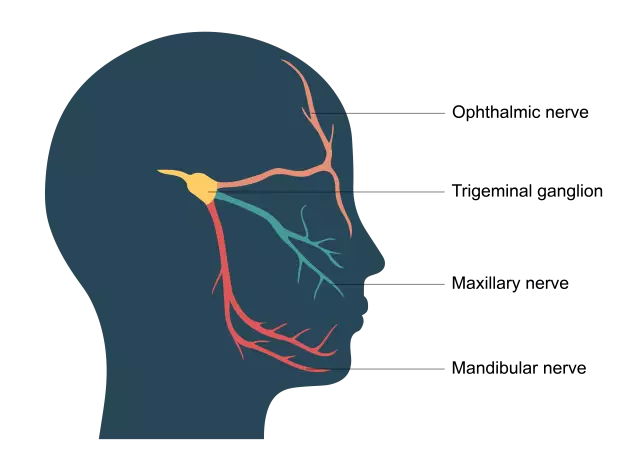- Author Rachel Wainwright [email protected].
- Public 2024-01-15 19:51.
- Last modified 2025-11-02 20:14.
Polyhydramnios
The content of the article:
- Causes of polyhydramnios and risk factors
-
Kinds
- Acute
- Chronic
- Symptoms
- Diagnostics
-
Treatment
Amyoreduction
- Possible complications and consequences of polyhydramnios
- Forecast
- Prevention
- Video
Polyhydramnios is one of the pathologies of pregnancy, an excessively large amount of amniotic fluid, which is also called amniotic (amnion is one of the embryonic membranes, the amniotic, or watery membrane of the fetus in the uterus).
Amniotic fluid, or amniotic fluid, is the liquid in which the fetus is immersed in the womb, protecting it from mechanical stress, infections, toxic substances, and also supplying nutrients and oxygen. The amount of amniotic fluid depends on the gestational age. At 10 weeks it is approximately 30 ml, at 14 weeks - 100 ml, at 38 weeks - from 1 to 1.5 liters. When the volume of amniotic fluid exceeds 1.5 liters, we are talking about polyhydramnios.

Even moderate polyhydramnios requires close medical supervision.
Polyhydramnios during pregnancy is observed in 0.6-1% of cases. Due to an excessive amount of amniotic fluid, the uterus enlarges too much, squeezes adjacent organs, raises the diaphragm, thereby making breathing difficult and impairing blood circulation. At the same time, the uterus itself is in hypertonicity, although it may subsequently become atonic. This condition requires careful medical assessment and monitoring, as it can lead to a number of complications, both for the mother and the fetus.
Synonyms: hydramnios, polyhydramnios.
Causes of polyhydramnios and risk factors
Polyhydramnios can occur for reasons associated with the mother's body, or for reasons associated with fetal pathologies. There is a combination of several reasons, and in some cases it is not possible to establish why hydramnios has developed - then it is called idiopathic.
The most common causes of polyhydramnios:
- multiple pregnancy;
- diabetes;
- heart or kidney disease in the mother;
- fetal anomalies (brain and spinal cord, gastrointestinal tract, urinary tract, chromosomal abnormalities with associated lesions);
- infections in the fetus, infectious diseases of the mother before conception or during pregnancy (herpes, cytomegalovirus, rubella, toxoplasmosis);
- anemia in the fetus, in particular, hemolytic anemia due to Rh-conflict.
Risk factors that increase the likelihood of developing pathology include:
- large fruit;
- impaired swallowing function in the fetus;
- violation of the excretory function in the fetus;
- chronic diseases of the cardiovascular and urinary system in the mother.
Kinds
There are two types of pathology - acute hydramnios and chronic.
Acute
It is characterized by the fact that a day, and sometimes a shorter period, there is a sudden and rapid increase in the volume of amniotic fluid, which is manifested by a sharp increase in the volume of the abdomen. There are transverse abdominal pains, shortness of breath, general health may worsen. The fetal heartbeat is poorly audible. Due to the significant and rapid increase in the volume of amniotic fluid, rupture of the uterus can occur - one of the most severe complications of pregnancy.
Chronic
In this case, the volume of amniotic fluid increases gradually, and due to the slow development it is sometimes difficult to diagnose. It develops at the end of the gestation period, usually due to diseases on the part of the mother - infection of the genital tract, renal pathology. With chronic polyhydramnios, a woman experiences constant, although often not too pronounced, discomfort, and this may be the only manifestation of pathology. Nevertheless, this species carries in itself no less threats to the mother and child than the acute one.
Symptoms
In the last weeks of pregnancy, a woman may begin to experience constant tension in the area of the enlarged uterus, while the fetus will show signs of anxiety and distress, manifested in excessive mobility.
Manifestations of polyhydramnios can be:
- pain in the abdomen, a feeling of heaviness is more significant than typical for a given gestational age;
- general discomfort, aggravated by movement;
- swelling of the limbs, especially severe - the lower ones (ankles, feet);
- a sudden increase in heart rate;
- discrepancy between the size of the uterus and the gestational age, the height of the fundus of the uterus above the bosom increases in comparison with normal indicators
- the volume of the abdomen is more than 100 cm (this figure is conditional, since the woman's physique must be taken into account);
- increased fatigue, weakness;
- the appearance of shortness of breath with a slight load (due to the rise of the diaphragm);
- gurgling sounds in the stomach (fluctuation);
- tight-elastic consistency of the uterus (hard abdomen);
- the appearance of a large number of stretch marks on the skin of the abdomen.
The appearance of any of these signs, and even more so several of them, requires an extraordinary consultation with an obstetrician-gynecologist and an unscheduled ultrasound examination (ultrasound).
Diagnostics
In addition to establishing the diagnosis of polyhydramnios, an examination of the pregnant woman and the fetus is required in order to detect the possible cause of the pathological condition. Diagnostic measures include:
- measurement of AFI (amniotic fluid index, amniotic fluid index, AFI) using ultrasound - an indicator within 8-18 cm is considered the norm, and AFI 24-25 cm and above indicates polyhydramnios;
- complex ultrasound;
- diagnostic amniocentesis and karyotyping (with confirmed polyhydramnios);
- cardiotocography;
- dopplerometry;
- clinical blood and urine tests, blood glucose and Rh antibodies;
- a smear for flora, a serological blood test (in order to identify a suspected infectious agent).
Depending on the results of the main studies, additional ones may be prescribed.
Treatment
The main goal of treatment is to reduce the amount of amniotic fluid to normal and improve the condition of the fetus. This is achieved, if possible, avoiding the direct removal of excess fluid from the uterine cavity (amnioreduction, amniodrainage), which is resorted to only in severe cases, since amnioreduction is associated with the risk of deterioration of the fetus, termination of pregnancy.
If, after diagnosis, it is possible to identify the cause of polyhydramnios, the main efforts of doctors are directed to its elimination (compensation of diabetes mellitus, normalization of cardiac activity and blood pressure, etc.).
Treatment of mild to moderate polyhydramnios can be carried out on an outpatient basis, hospitalization is required for the treatment of severe pathology.
According to indications, the following can be used:
- vitamin therapy (vitamins C, E, group B);
- antibiotic therapy (antibiotics are selected that are acceptable for taking during pregnancy);
- diuretics (Furosemide);
- drugs that improve blood flow to the placenta and uterus (Curantil, Actovegin).
Amyoreduction
Removal of excess amniotic fluid is carried out using amniocentesis - a careful puncture of the amnion (fetal bladder) with a puncture needle, to which the drainage system is connected. The amount of fluid removed may vary, depending on whether the polyhydramnios is acute or chronic, as well as the condition of the fetus. In the event that a large amount of excess fluid is removed once during amniodrainage, they speak of aggressive amniodrainage, but if the procedure is performed several times with a small amount of fluid removed each time, amniodrainage is called serial. The need for aggressive amniodrainage is less common.

Amnioreduction is a method of treating severe polyhydramnios
Despite the fact that amnioreduction is considered an uncomplicated procedure, it can have dangerous complications, which the woman undergoing it should be informed about:
- rupture of the water shell;
- infection of the fetus;
- fetal injury during amniocentesis;
- trauma to the abdominal organs of the pregnant woman (bladder, intestines);
- placental abruption;
- premature labor.
When carrying out amnioreduction by an experienced specialist in compliance with all the rules of asepsis, the likelihood of complications is extremely low.
If the procedure is carried out at the very end of gestation, it can be used in order to stimulate the onset of labor.
Treatment continues until the fetal condition stabilizes and the volume of amniotic fluid decreases.
In rare very severe cases, when polyhydramnios threatens a woman's life, they resort to abortion, regardless of the gestational age.
Possible complications and consequences of polyhydramnios
Polyhydramnios is one of the causes of various developmental disorders of the child. The process of childbirth is also complicated, there is a weakness of contractions, premature detachment of the placenta, bleeding may develop. Recovery of a woman's body after pregnancy, complicated by polyhydramnios, requires more time.
Possible complications:
| condition | Short description |
| Premature onset of labor | Premature delivery is considered to begin between 22 and 37 weeks of gestation. It carries a serious risk to the fetus, which is higher the less term the pregnancy is. |
| Premature rupture of the amnion | The rupture of the membranes does not allow the pregnancy to be maintained, leading to premature birth. |
| Wrong position of the fetus, entanglement with the umbilical cord | Due to too much free space in the uterine cavity and mobility, the fetus often takes an incorrect position, which complicates childbirth, and can also be wrapped around the umbilical cord. Umbilical cord entanglement carries the risk of developing hypoxia during childbirth. |
| Prolapse of the umbilical cord | Due to the prolapse of the umbilical cord, it is compressed, which leads to fetal hypoxia. |
| Atony of the uterus | A condition in which the uterus loses its ability to contract. Violates labor, carries a high risk of bleeding. |
| Respiratory failure in the mother | It leads to the development of hypoxia and the associated risks in both the mother and the fetus, which, in turn, can cause a number of dangerous complications. |
| Death of the fetus | In some cases, the child cannot be saved. The risk is higher if idiopathic polyhydramnios is diagnosed. |
Forecast
In most cases, polyhydramnios is mild or moderate, and provided that the pregnant woman is under the supervision of an obstetrician-gynecologist (examination at least 1 time per week) and follows all the recommendations, the prognosis is favorable. Severe complications, including fetal death, are rare. The prognosis worsens if a pregnant woman is deprived of medical supervision.
Prevention
The measures for the prevention of polyhydramnios include the timely registration of a pregnant woman on obstetric records, her balanced diet, maintaining an optimal water regime, sufficient physical activity (daily walks in the fresh air are especially useful), and compliance with all medical recommendations.
Video
We offer for viewing a video on the topic of the article.

Anna Kozlova Medical journalist About the author
Education: Rostov State Medical University, specialty "General Medicine".
The information is generalized and provided for informational purposes only. At the first sign of illness, see your doctor. Self-medication is hazardous to health!






